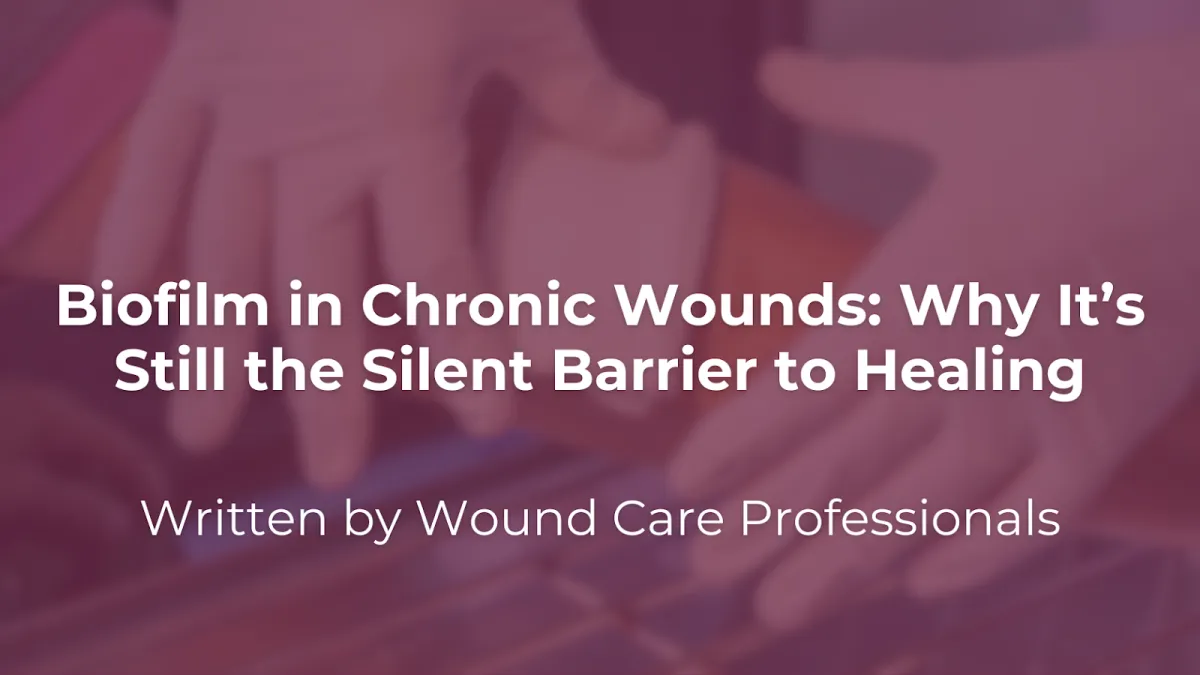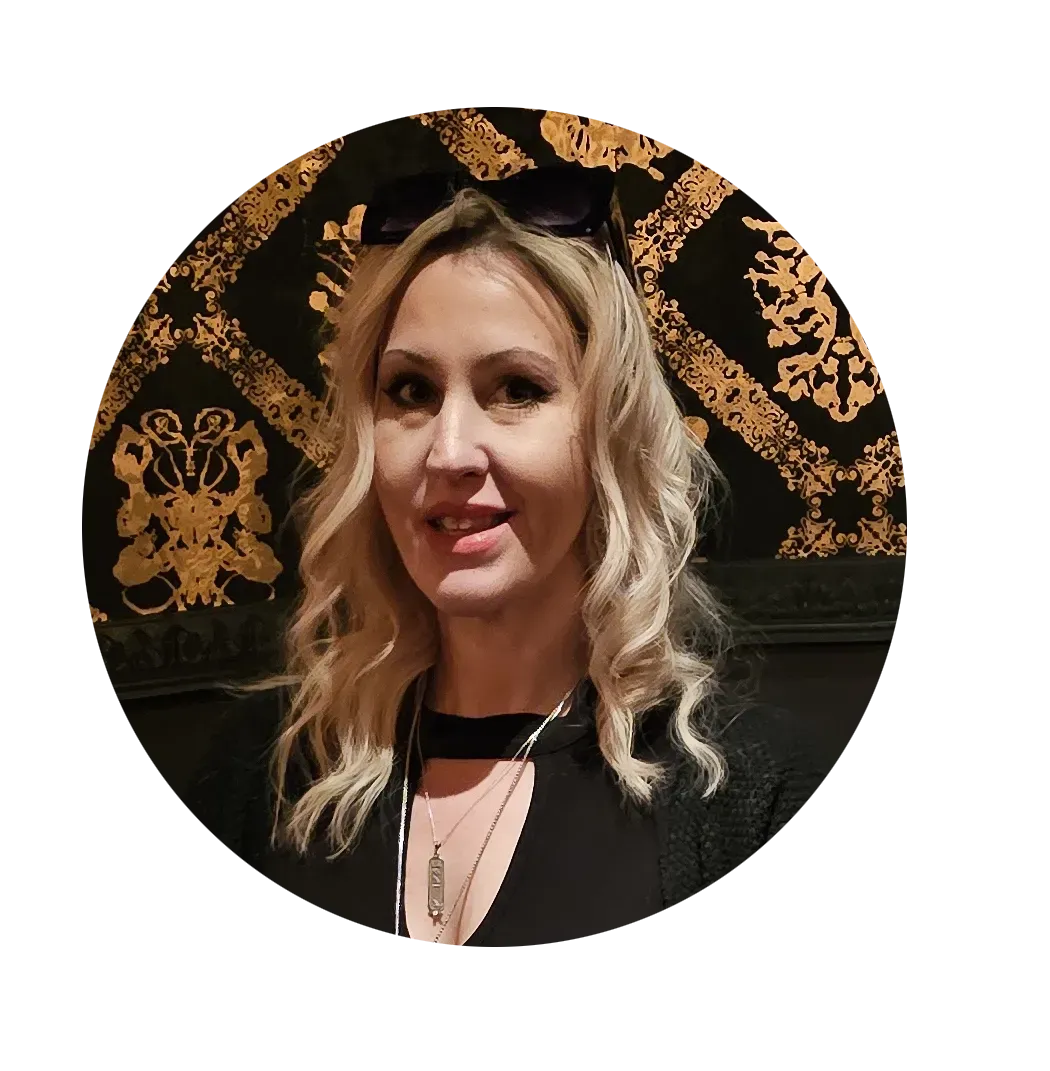wound care insights blog
Real-World Tips. Expert Voices.
Smarter Healing.
Stay ahead in wound care with expert-led articles, practical strategies, clinical updates, and stories from the field. Designed for busy professionals who want real answers—not fluff.

Biofilm in Chronic Wounds: Why It’s Still the Silent Barrier to Healing
When it comes to stubborn wounds that refuse to heal, one common cause biofilm. Though invisible to the naked eye, biofilm in chronic wounds presents a major obstacle to effective treatment and recovery. Many clinicians and caregivers may improve their recognition of biofilm and opt for more effective treatment modalities.
At Wound Care Professionals, we're committed to advancing wound care through education and providing healthcare providers with the tools and training needed to address even the most challenging wounds.
In this blog, we’ll explore what biofilm is, why it matters, and how to overcome it using evidence-based strategies.
What Is Biofilm and How Does It Form in Wounds?
Biofilm is a combination of Extrapolymeric substance (EPS), the protective layer component, and microorganisms, primarily bacteria. Biofilms attach to wound tissue and form a structured community. This creates a "bacterial bunker" to protect itself from outside threats such as antibiotics, antiseptics, and immune system responses.
The formation of biofilm typically follows this process:
Bacteria attach to the surface of a wound
They begin to multiply and produce extracellular polymers
A mature biofilm develops, creating a persistent infection
According to the National Institutes of Health (NIH), up to 80% of chronic wounds contain biofilm, making it a significant contributor to delayed healing.
Why Biofilm Is a Barrier to Healing
Unlike free-floating (planktonic) bacteria, bacteria within biofilm can be up to 1,000 times more resistant to antibiotics. This resistance allows harmful bacteria to survive even under aggressive treatment, leading to:
Ongoing inflammation
Impaired granulation tissue formation
Healing that becomes stalled or regresses
Since biofilm is often invisible and does not always present with classic signs of infection, it can go undetected. As a result, well-intentioned treatments may fail to address the real problem.
Signs That Biofilm May Be Present in a Wound
Biofilm does not always present obvious symptoms. However, certain clinical signs should raise suspicion:
Recurring inflammation or redness without a clear source of infection
Lack of progress despite consistent wound care
Increased odor or exudate
Slough that returns quickly after debridement
These indicators often suggest that the wound is trapped in a chronic state, sustained by the presence of biofilm.
Effective Strategies for Biofilm Wound Treatment
Creating a successful biofilm wound treatment requires a multi-faceted approach. Here are some of the most effective, research-supported strategies:
1. Mechanical Debridement
Removing the physical structure of the biofilm through sharp, autolytic, or ultrasonic debridement helps expose bacteria and damaged tissue. This improves the effectiveness of topical antimicrobials.
2. Antimicrobial Dressings and Biofilm-Disrupting Agents
Some dressings have been proven to penetrate the EPS of a biofilm and kill the bacteria inside. These dressings and topical agents typically contain an agent to break apart the EPS and/or an effective antimicrobial agent to kill bacteria inside.
They may be effective at managing mature biofilms and preventing reformation. Please refer to the manufacturer’s IFU’s and post-market research to assure the effectiveness of the particular wound dressing.
3. Evidence-Based Protocols
Clinicians should rely on current guidelines and individualized care plans that include regular wound reassessment. At Wound Care Professionals, our certification programs equip providers with up-to-date protocols that drive better outcomes.
The Role of Education in Winning the Biofilm Battle
Many healthcare professionals do not receive formal training in identifying and managing biofilm in chronic wounds. That is where Wound Care Professionals can help.
We offer:
Comprehensive wound care certification and CEU courses
On-site and virtual consultations for hospitals and clinics
A community of wound care providers focused on continuous improvement
Our goal is to raise the standard of care through expert-led education and practical tools.
Real-World Results: A Case in Point
One of our community members, Bianca S., MHA, BA, LVN, shared how her experience with Wound Care Professionals shaped her approach:
“The founder of Wound Care Professionals, Nancy Morgan, has been a true inspiration on my journey to furthering my wound care education. I am deeply grateful for the opportunity to learn from WCP and continue to grow in this vital area of healthcare.”
Bianca applied principles from our Advanced Wound Management course, including targeted debridement, biofilm-aware dressing selection, and structured monitoring using tools like the Wound Coach App, to manage a chronic venous leg ulcer that had resisted conventional treatment. This experience allowed Bianca to further her wound care knowledge and deepen her confidence in delivering effective patient care.
Let’s Talk Biofilm and Break the Silence Around It
Biofilm in chronic wounds is an often-overlooked challenge, but it does not have to remain that way. With practical knowledge, proven strategies, and expert support, clinicians can address this barrier head-on and improve outcomes for their patients.
Here’s how you can take the next step:
Contact Wound Care Professionals to discuss how we can support your biofilm wound treatment efforts
Schedule a free consultation with one of our wound care experts
Download our free guide for deeper insights on identifying and managing biofilm in chronic wounds
Together, we can break the silence around biofilm and bring clarity to wound healing.
Fall into one of these Categories? We'd Love To Help You Grow!
NURSES
PHYSICIANS
THERAPISTS
CNA/MA
MEDICAL INDUSTRY
HEALTHCARE PROFESSIONALS
HEALTHCARE ORGANIZATIONS
UNLICENSED HEALTHCARE PROFESSIONALS
INTERNATIONAL HEALTHCARE PRO
Check our what our WCP Community Members are saying...
The founder of Wound Care Professionals, Nancy Morgan has been a true inspiration on my journey to furthering my wound care education. I am deeply grateful for the opportunity to learn from WCP and continue to grow in this vital area of healthcare.

Bianca S.
MHA, BA, LVN


Innovation
Fresh & Creative Solutions

Integrity
Honesty and Transparency

Excellence
Top-Notch Services

COMPANY
LEGAL
CUSTOMER CARE
FOLLOW US
COMPANY
Proverbs 16:3 - Commit your actions to the Lord, and your plans will succeed.
RESOURCES
CUSTOMER CARE
FOLLOW US
Copyright 2025 Indiana, USA. All Rights Reserved.
